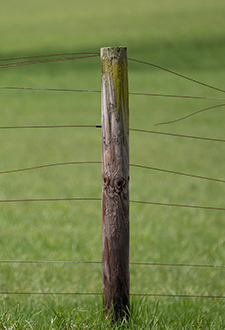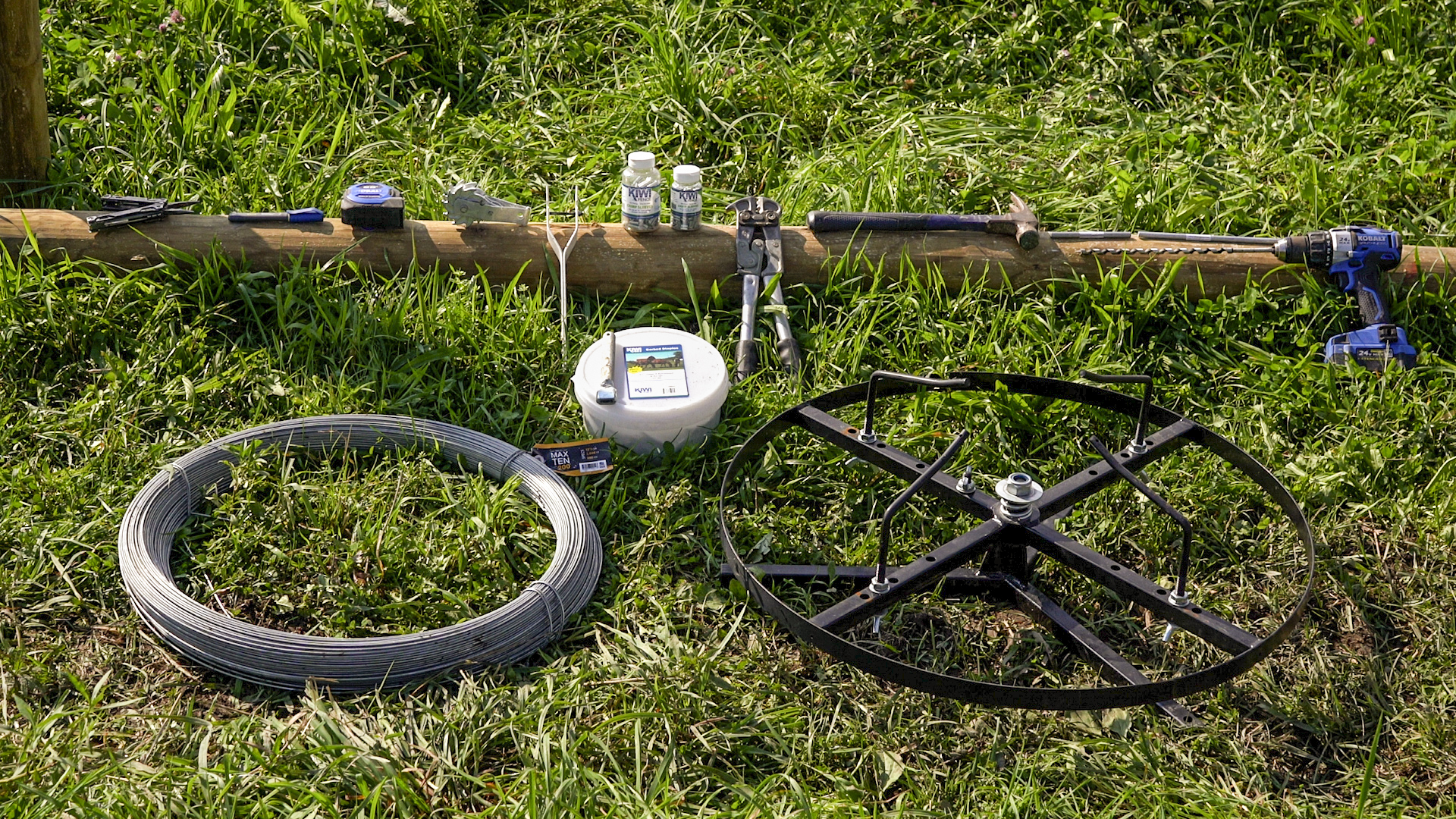BLOG
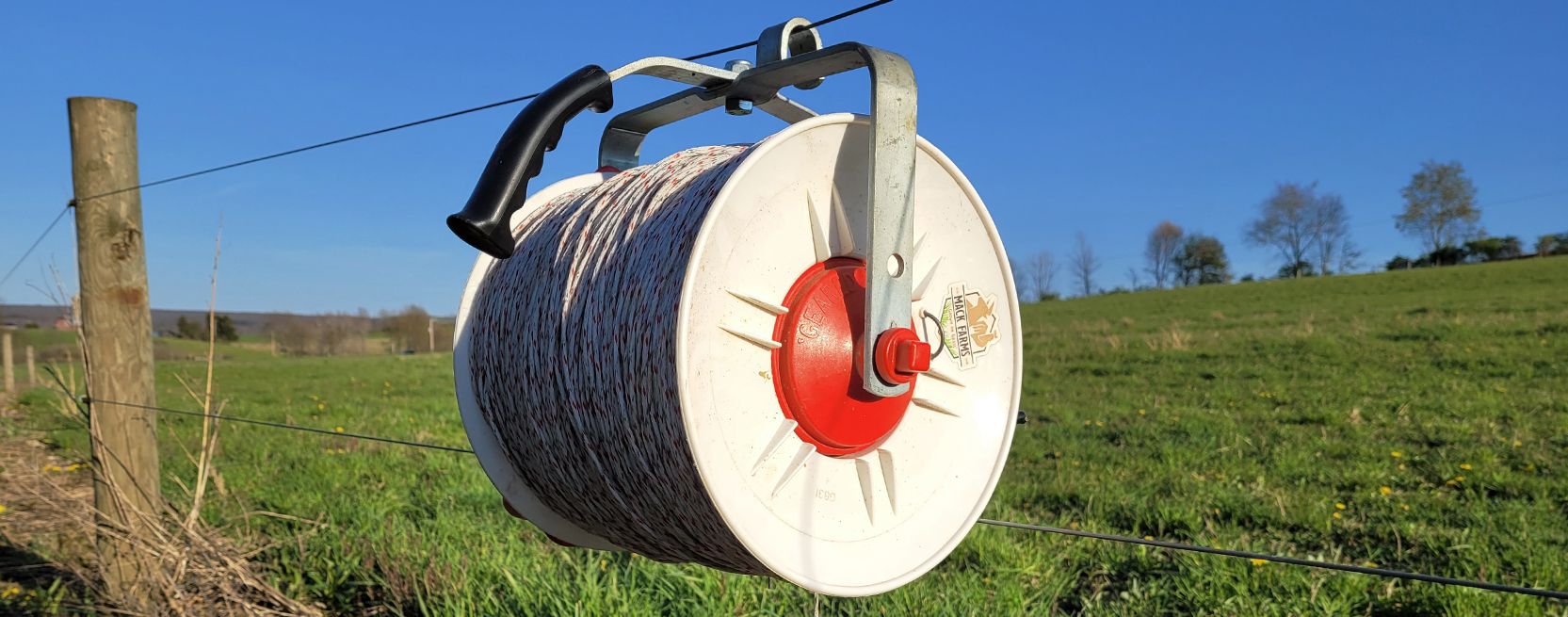
Your Grazing Toolbox - Reels
“You can’t take it with you when you go?”
Can you imagine looking out at the family cattle operation and saying “Grandpa, why don’t you just move that barbed wire and set it up so we can graze the old hay field below the woods?” He’d laugh you off the farm! Until recently, fencing was a lifelong permanent farm fixture, for worse or for better. Those posts will be there until they get too tipsy or rot off. That old wire will sag and inevitably find its way around the blades of your brush hog, I would bet a twenty on that. Fence was set and static and inflexible. Portable electric fencing ushered in a new era of customizable pasture craft.
Today we can take it with us when we go!
Today, we can do the impossible. A Graziers only boundary is their property lines. Rotational / Regenerative grazing products have opened a new way for fencing. At a low entry cost, Graziers can invest in fencing for the whole property that they can load up on the four-wheeler. Nothing makes this dream a reality more than the Portable Reel. I can carry a quarter mile-1320’ (9 lbs) or a half mile-2640’ (15 lbs) of twine on a reel. Add some step-in posts and the farm is as good as a blank canvas in the eyes of a focused Grazier.
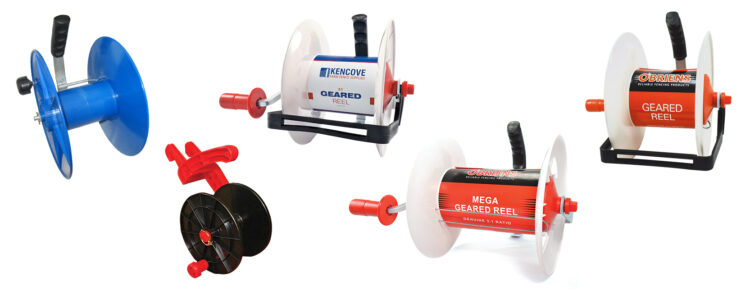
With a little bit of planning and forethought a fence design can be created that requires minimal infrastructure but allows flexibility so you can achieve maximum efficiency. Once an animal is trained to electric twine, reels can be used as perimeter, interior, and alley way fencing.
Half of my farm was never fenced in its previous life. On this portion of land, I established my perimeter with T-posts in pivotal locations and a few step-in posts that I can spare to leave behind as I move. These bones and structure remain as an "exoskeleton" year-round and I provide the vital "organs" (interior posts, twine, and electric spark) of the system only when grazing those paddocks. Once grazing is completed in a section, I wind up my reels, pull my interior step-in posts and go service another part of the farm with my mobile, four-legged, fermentation tanks.
Geared for success
The speedy transplant of these fence "organs" is made extremely time efficient due to the gearing of reels. Buy choosing a 3:1 geared reel you will save yourself time and energy. A ratio of 3:1 indicates that for every full crank of the handle, the bobbin completes 3 revolutions – thus tripling your energy input. I wish everything in life tripled my investment! With a geared reel your twine will be wound up in no time.
Most Reels come with a standard plastic guide to prevent wayward twine or a wild loop from wrapping around the crank handle or frame of the reel. If you’ve experienced this you know just how much of a pain it is, especially when using a 3:1 ratio reel. Guides are therefore essential to prevent high blood pressure and the loss of one's patience. Because guides are so beneficial, they are a standard in my operation. If you have purchased reels without a guide, consider upgrading with a Kencove Steel Guide (RRWG) that fits most single reels, or a RRWGX for a O’Brien’s Mega Reel. These optional guides share the bolt that connects the reel handle to the frame.
To install the guide:
- Unthread the nut holding the handle to the frame
- Place the guide band between the frame and handle.
- Align all three holes (frame, guide, and handle)
- Reinstall the bolt and nut to lock the guide and reel handle into place on the frame.
Be sure to align the new guide to curve down below the bobbin, not up over the top of the reel as the twine is intended to pay out and wind up from the bottom of the reel. Sometimes the new guide will need a tweak for the curvature of the metal band to parallel the bobbin just right. Feel free to apply gentle pressure to shape the band to the curve of best fit. Remember to thread your twine through the new guide before attaching a handle or you’ll have to remove the handle to feed the twine through the guide and reattach the handle. I cannot tell you how many times I’ve stepped back to admire the way I tied my twine to a new handle using knots that provide good contact and holding power only to frown as I realize I didn’t first feed the twine through the guide! Some handles are thin enough to slide through the guide opening while others are too bulky to pass through.
Get a Handle on it
Handles are another way to customize your reel. There are many models of handles to choose from, each with its own advantage. Some handles have built in springs to help absorb shock made using polycarbonate for durability. My preference is the one-piece polyethylene handle (GPL) or Zammr (GPZ). These polyethylene handles do not include a spring but are thin and lightweight. They have a more secure hooking design that hooks to any type of wire or twine. They too are insulated so you can hook to perimeter or energized fence with no worries of experiencing the shock of your life. No pun intended. That fence could be high tensile, barbed wire or woven wire and the insulated handle allows you to terminate anywhere you choose. My first pick is the Zammr (GPZ), which offers a convenient feature. This handle gives you the option to use as an insulated hook or a conductive hook. In most cases, I use this handle to draw power from my perimeter fence to energize the interior fence. In this instance I need a handle hook that will allow electricity to pass from the perimeter fence, through the handle, and to the braided twine. The Zammr handle also has an ergonomic bowed hand grip and tie off slots that accommodate twine or ribbon. I find this to be the most versatile handle for a Grazier.
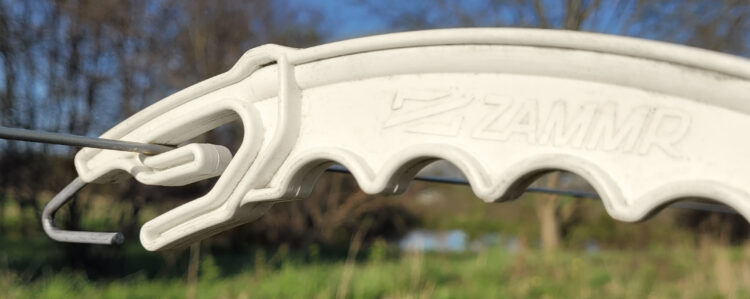

The Mighty Mini
If you have areas inside your paddocks needing protection from rubbing cattle or indiscriminate goats, I encourage you to experiment with mini reels. They are available for a fraction of the price of a full-sized reel. Why tie up a full-sized reel that could be used to set up your next paddock? Let mini reels do the work of protecting your young trees or berry bushes. A few step-in posts and a mini reel can go a long way to deny access to areas you wish to remain untouched by your livestock. Mini reels also feature insulated hooks to hang from existing fence when needed. I use the pre-spooled mini reel with 660 feet of white twine (RM2PW). Mini reels are extremely lightweight, making minimal strain for the bipedal Grazier or motorized fence-mobile during transport to the next greenery.
Whether creating a large pasture perimeter, interior infrastructure, or denying access to other landscapes, reels make pasture management much more simple, quick and efficient. And here's the Best Part: You can take it with you when you go! Use it AND move it. Flexibility allows you to achieve maximum efficiency with your resources and grazing plan.
Do not fence yourself out with permanent fence, instead reel in the possibilities with portable pastures.
Eli Mack - Pennsylvania Grazier




